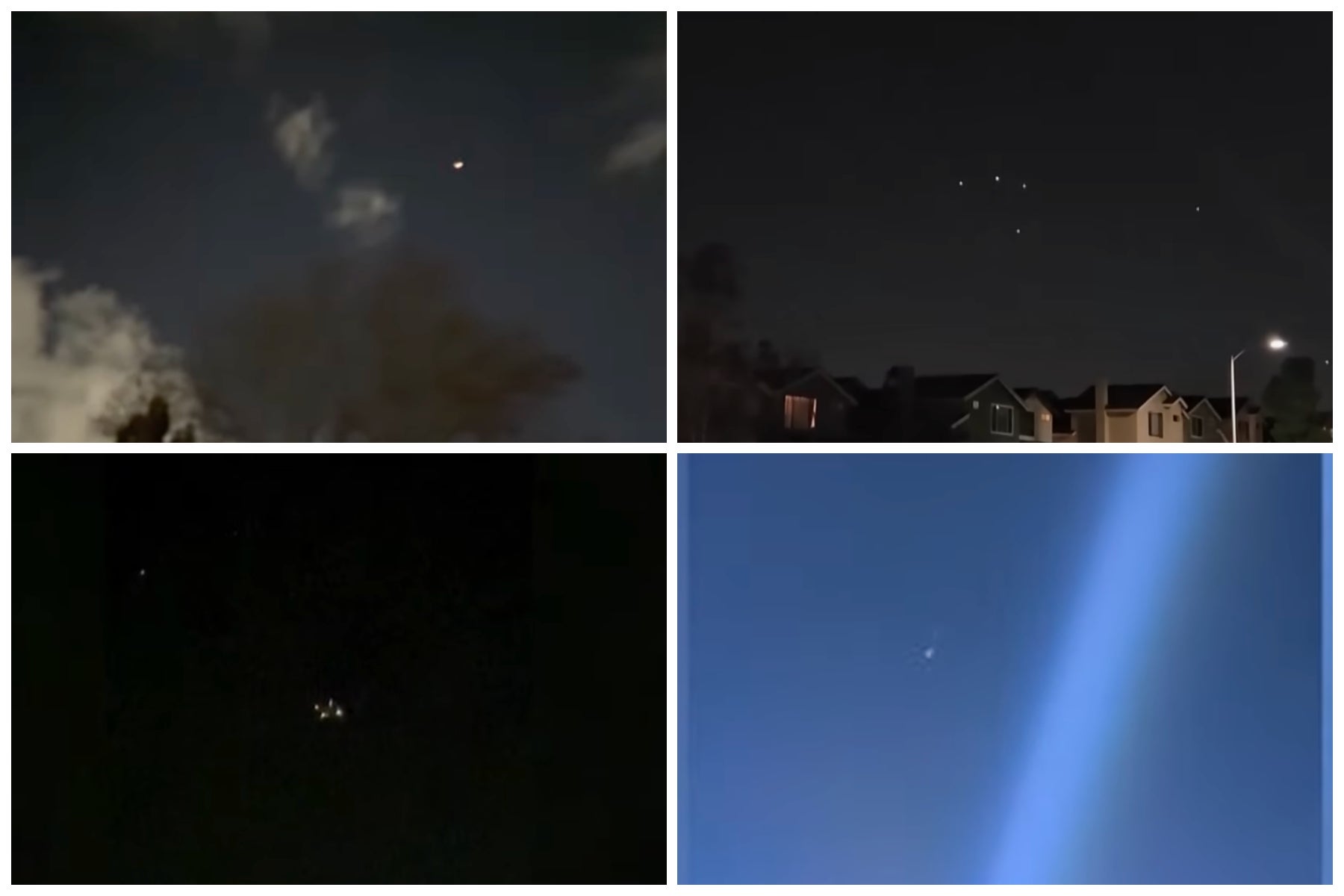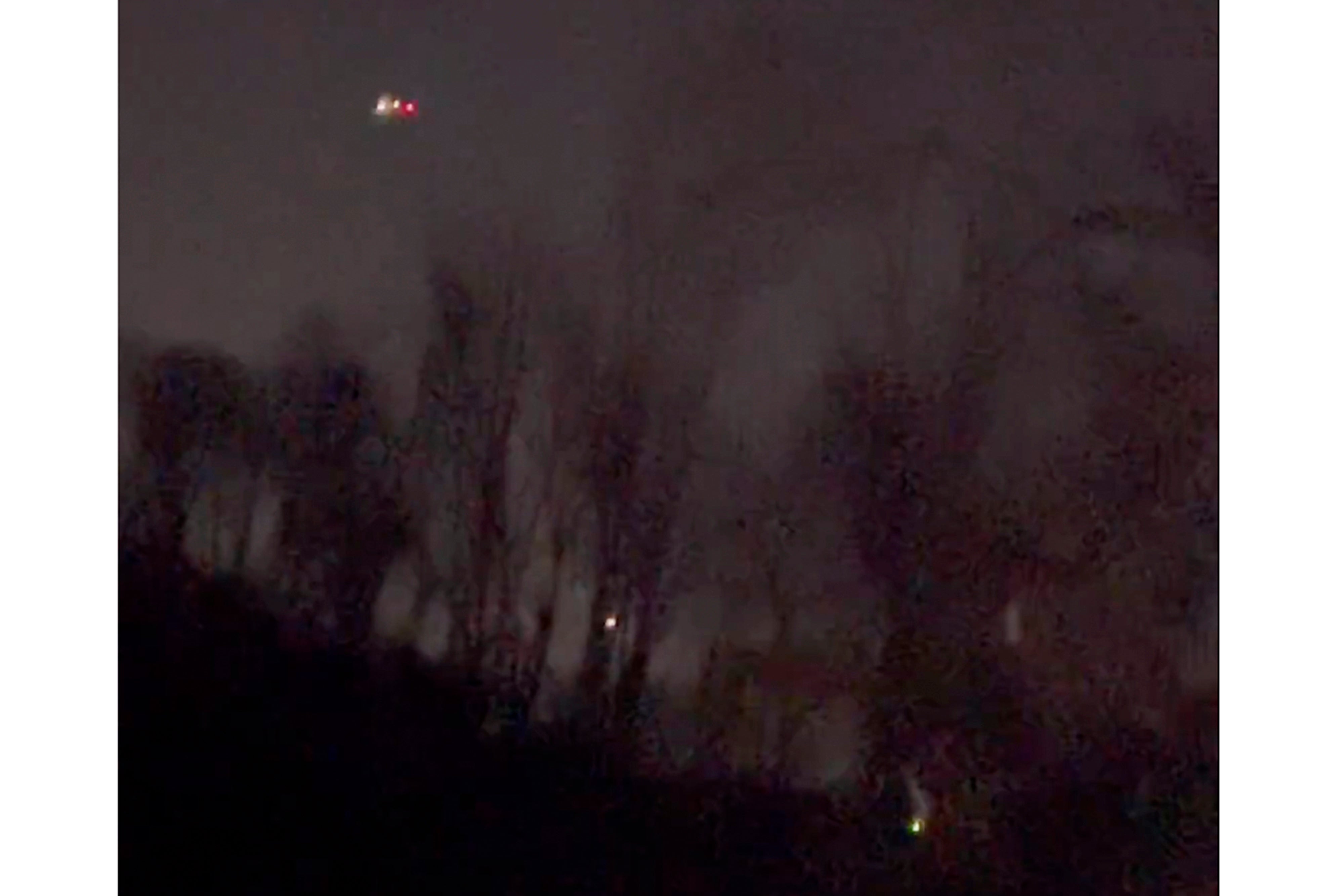Drones are being spotted all over the U.S in recent weeks.
On Tuesday more suspected sightings in the eastern U.S. led to a temporary airspace shutdown at an Air Force base in Ohio and arrests near Boston‘s Logan International Airport, as elected officials increased their push for action to identify and stop the mysterious unmanned flights.
Drones flying around Wright-Patterson Air Force Base near Dayton, Ohio, forced base officials to close the airspace for about four hours late Friday into early Saturday, said Robert Purtiman, a base spokesperson.
It is the first time drones have been spotted at the base, one of the largest in the world, and no sightings have been reported since early Saturday, Purtiman said Monday. He would not say how many drones were flying in the area, adding that they ranged in size and that they did not impact any base facilities.
Summary
- Mysterious drone sightings have been reported across multiple US states, including California, Connecticut, Florida, Massachusetts, New Jersey, New York, Ohio, Pennsylvania, Texas, and Virginia.
- The FBI and DHS are investigating the incidents, which have caused airport closures and prompted a classified briefing for the House Intelligence Committee.
- Officials have found no evidence of foreign involvement and assert there is no credible national security threat.
- Some officials believe many reported sightings may be misidentified manned aircraft.
- While some arrests related to drone activity near airports have been made, the origin and purpose of the majority of the drone sightings remain unknown.
- Follow our live blog.
National security officials have said the drones recently spotted in the eastern part of the country don’t appear to be signs of foreign interference or a public safety threat. But because they can’t say with certainty who is responsible for the sudden swarms of drones — or how they can be stopped — leaders of both political parties are demanding better technology and powers to deal with the drones.

But are those flashing lights in the sky really airplanes
Up in the sky, is that a drone, a plane or a helicopter?
Experts who study unmanned aircraft systems — better known as drones — say it can be tough to tell from miles away. But there are clues.
A map of U.S drone sightings
A light in the sky at night can easily be misinterpreted, according to John Slaughter, director of the Unmanned Aircraft Systems Research and Operations Center at the University of Maryland.
“You can’t just walk outside and say, ‘Oh, that’s not a drone,’ or ‘That is one.’ All you can really factually say is ‘I saw a light in the sky,’" Slaughter said.
Dozens of mysterious nighttime flights first spotted in New Jersey last month and now being seen across the U.S. have raised concerns among residents and officials. Part of the worry stems from the flying objects initially being spotted near the Picatinny Arsenal, a U.S. military research and manufacturing facility, and over President-elect Donald Trump’s golf course in Bedminster.
Are those flashing lights a plane?
Planes and helicopters all have a flashing lights and typically at least one red anti-collision light, often two. They also sport navigation lights, which are steady, red and green colored lights like the ones found on boats. Many will also have flashing white strobe lights at their wingtips. And they have bright landing lights.

Drones flying at night are only required to have one bright, anti-collision light that's visible 3 miles (5 kilometers) away. But drone owners can add other lights, so some have more than one. Drones are smaller, so when they have multiple lights they are close together, but at night it's often not possible to figure out precisely how far away they are.
"A light is just a bright point,” Slaughter said. “And it might be 100 yards (90 meters) away, it could be literally 40 miles (65 kilometers) away and it looks the same.”
What noise does a drone make?
Drones tend to be quieter and make a more high-pitched buzzing noise than what's generated by the jet engines or propellers that drive planes and helicopters. But bigger drones can be louder, and the sound may be difficult to discern from a distance.
Drones heavier than about a half-pound (0.2 kilograms) may have an identifying number displayed on the outside.
“You certainly wouldn’t see it at night, and you’d have to be up close to see it, you know, in the daytime,” said Paul R. Snyder, director of the Unmanned Aircraft System program in the University of North Dakota's Aerospace Sciences School.
Does a drone move like that?
Planes and even helicopters tend to move smoothly in the air, but multi-copter drones can stop on a dime, pivot 90 degrees and reverse course, Slaughter said.
“That kind of motion can give you a clue that you’re looking at a drone, not an aircraft," he said.
And the vast majority of drones will be operating below 400 feet (122 meters), following federal regulations.







